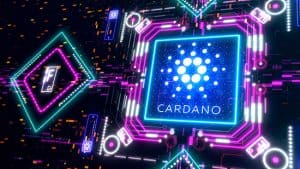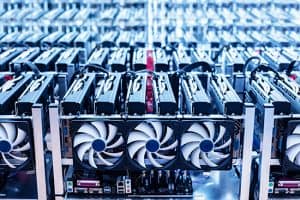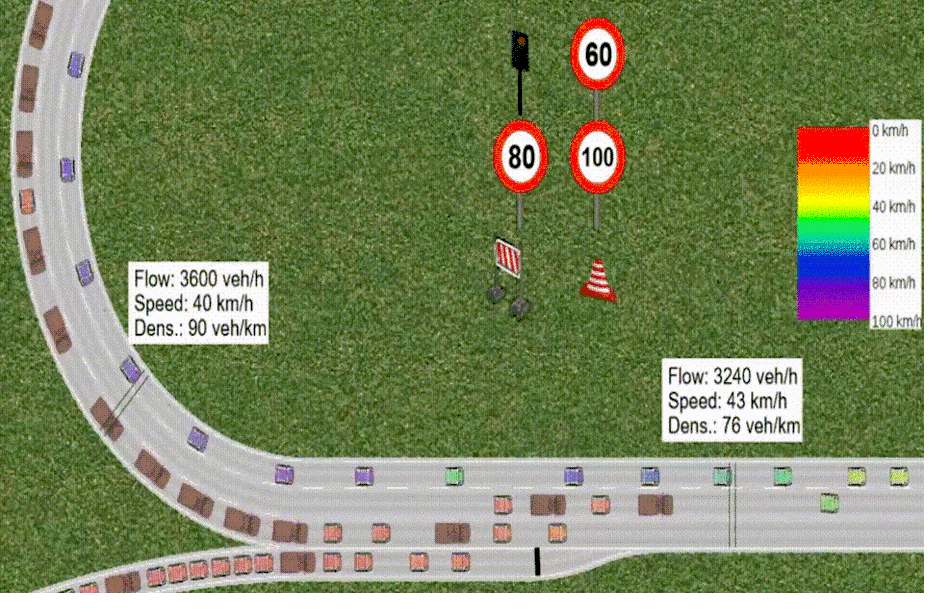
During every bull run, a new rising crypto star blindsides the market. This time that star is Cardano (ADA).
After two years of lingering below $0.01, Cardano has exploded in the past three months, hitting highs of just over $3.00 and growing by more than +2,500%.[1] This is due to a combination of the excitement surrounding ADA’s “green” credentials and its potential to be an “Ethereum Killer.”
Cardano has been a sleeping giant for some time with even Grayscale calling it undervalued compared to other cryptocurrencies.[2] Now could be the moment it begins to unseat Ethereum (ETH).
Cardano is a “3rd generation” cryptocurrency being built by IOHK.[3] This basically means that it is using blockchain technology to build upon the work already done by Bitcoin (BTC) and Ethereum (ETH) .
The project was founded in an attempt to solve many of the perceived problems with Bitcoin and Ethereum. Most notably, the issues surrounding decentralized governance, scalability, and usability. Rather than just trying to be a “store of value” like Bitcoin, Cardano was created to function as the operation layer of a vast, decentralized internet.
Cardano enables users to create decentralized apps (dApps). These can take the form of games, financial institutions, or even ways to manage insurance contracts. The Cardano network handles all of these transactions and prevents bad actors from abusing it.
To longtime FNN readers, this description may sound eerily similar to that of Ethereum. (Read more about Ethereum in my prior article here.) This is because Ethereum and Cardano were both designed to solve the same problem, but they’ve taken a different approach.
The first obvious difference is that Cardano was built with Proof of Stake (PoS) in mind from day one.
Unlike Bitcoin, Cardano doesn’t need large networks of computers to solve equations to process transactions. Instead, users are able to “stake” a portion of their assets in order to guarantee that transactions go through.

Cardano is significantly more scalable than traditional Proof of Work (PoW) systems. Its blockchain requires just 6 GWh of power in order to function, which is around 0.01% of Bitcoin’s total network energy requirements.[4] This makes Cardano significantly greener than most of its counterparts.
It also enables Cardano to avoid some geopolitical problems surrounding physical crypto mining centers such as China’s recent ban on Bitcoin. However, the project has far more potential than just being a greener Ethereum or Bitcoin.
For me, the most important feature of Cardano is the way that the project has been developed. Cardano is being built using academic methodology and best-in-class development standards.
To date, it is the only peer-reviewed Proof of Stake project. This means a lot more than you might think. Peer Review is an incredibly time-intensive process, and it means that experts in your field have reviewed your work and decided that it is up to their standard.
The Cardano team has also gone beyond that and has created formal specifications for their work and verified their proofs using Isabelle.[4] The founder of Cardano, Charles Hoskinson, has said that he wants Cardano to become a “standard” for the crypto space. The company’s commercial arm has even dedicated $100 million to be invested in developing DeFi technologies, NFT products and blockchain education.[5]
This diligent approach stands out in an industry that is largely dominated by a “we’ll test in production” attitude towards development. It is also designed to bring some kind of procedure and science to the cryptocurrency space — something that is sorely needed if it is to continue to grow.
The problem with Cardano’s approach is that it makes it a bit of a slow-burning project. The high value set on following the norms used in traditional industries leads to a naturally slower development cycle.
This means that the project has been in development for over 5 years now, and its potential primarily lies in its long-term roadmap that summarizes Cardano development. This roadmap is broken up into 5 “eras” (the term Cardano has given to each stage) — all named after famous scientists, philosophers, and polymaths.
Currently, the Cardano team is on stage 3 — Goguen, where they implement functional smart contracts. Each stage represents years of testing and work, and significantly expands the capacity of the Cardano blockchain.
Stage 3 is probably the most important part of Cardano’s project. It finally opens the door for true DeFi development on the platform. A major update, known as a hardfork and called Alonzo, was launched on September 12, and so far it has proven stable.[7]
The Alonzo update is a major milestone because it has finally enabled developers to start creating NFTs and simple smart contracts, though fully fledged dApps are still on the horizon.
After the Alonzo update came out, investors have been “selling the news” resulting in Cardano’s price stabilizing at around $2 for now. As new functionalities are added, I expect that Cardano will see renewed growth, particularly as we approach fully fledged dApps.
dApps have been a key feature of the cryptocurrency space for the past few years. For reference, decentralized finance (DeFi) apps alone have more than $80 billion USD in locked assets.[8] (You can read more about DeFi in my previous article here.)
Despite this growth, DeFi has been plagued by high fees and long transaction times. Decentralized exchanges (DEXs) like Uniswap (UNI) have become impractical for smaller trades. This has hampered adoption and been a roadblock for break-out growth for the industry.
The source of this problem can largely be traced back to Ethereum. The vast majority of DeFi projects are still built on the Ethereum platform, and as I have previously noted, Ethereum is unable to handle this transaction volume.
A number of other platforms, notably the Binance Smart Chain (BNB), have sprung up to try to offer a solution to this challenge but have fallen short. This has either been due to technical problems in their design, or because the system is heavily centralized leaving it open to abuse and gatekeeping.
This is part of why Cardano has recently jumped into the spotlight. For the past year, the Cardano team has been working on various tests focusing on the release of smart contracts.
The Cardano development process is very cautious compared to other blockchains. Because of this, Cardano users have not had access to the closed tests and were unable to try them out. This changed when the Alonzo update went live on September 12, 2021.
The much-anticipated update has enabled Cardano to finally run fully functional smart contracts. The hope is that other cryptocurrency projects, tired of Ethereum’s problems, will flock to the Cardano blockchain as an alternative. The Cardano team seems so certain of this that they have built an ERC20 converter to make it easier to convert Ethereum assets to the Cardano blockchain.
While this news is positive, and real alternatives to Ethereum are severely needed, this does not mean Cardano is perfect. One of Cardano’s key differentiators from Ethereum is the project’s choice to use an extended Unspent Transaction Outputs (eUTXO) model instead of Ethereum’s Account Model. These models basically describe the way that a blockchain keeps track of account balances.
We’re about to get a bit technical, but please bear with me. By understanding the following, you will know more than the vast majority of crypto investors.
All cryptocurrency consensus methods can be broadly measured through three factors:
Using these definitions, Ethereum's “account model” is excellent at concurrency, but very poor at parallelism. It requires a smart contract to be able to understand what is happening on a global level.
Each transaction needs to be processed in a specific order in order to avoid contention which prevents large numbers of the same “task” running simultaneously. It also means a smart contract needs to be developed to adapt to changes at a global level which requires significant development resources.
The most common example is Decentralized Exchanges (DEXs) like Uniswap. These often need to terminate if crypto prices move into an undesirable area. This requires very specific development approaches and is the source of many bugs and vulnerabilities in Ethereum’s systems.

Most importantly, it means that Ethereum cannot allow multiple applications that may conflict to run simultaneously. This leads to Ethereum being unable to run large operations in parallel. To understand this, imagine a crowded highway with an on ramp — it is difficult for new cars to enter due to the large volume of traffic.
Instead of repeating that system, and thus Ethereum’s errors, Cardano instead opts to build upon Bitcoin’s UTXO model with eUTXO. A UTXO is a list of unspent transaction outputs. Each transaction between a user consumes inputs and generates outputs with some data attached. This is similar to when you send money from your bank account to a friend — just the blockchain validates it instead of your bank.
eUTXO takes this further by breaking up each UTXO into three components typically called primitives:
The effect of this is significant. Instead of needing to understand the global Cardano state, all a smart contract needs to be concerned with is each individual UTXO. Each UTXO is unique, and only changes its state when a user “spends” it by completing a transaction.
An easy way to understand this is to picture your bank account. It is possible for your account to send or receive money without understanding the “global” state of all the money that is controlled by your bank.
The eUTXO solution is potentially very powerful. It significantly reduces the complexity of a smart contract and enables dApp developers to build something that generates value with comparatively little effort compared to Ethereum and other solutions. However, some in the cryptocurrency community have been vocally attacking Cardano’s solution — particularly when it comes to decentralized exchanges.[9]
Decentralized exchanges like Uniswap rely on large numbers of users locking their assets in order to provide liquidity to the exchange. This means that the smart contract needs to understand the global state of the blockchain in order to function. As many users need to understand this state, they are all competing over the same eUTXO, and are likely to block each other from completing their transactions.
This has led to a number of criticisms from the cryptocurrency community. The biggest of which is that Cardano’s eUTXO will require centralized solutions in order to operate, undermining Cardano’s utility as a smart contract provider.
It’s important to note that many of these criticisms have been overblown but it does demonstrate something important: Cardano’s technology is fundamentally different from Ethereum’s, and it will likely be suited to different kinds of projects.
The short answer: I Invest in both.
Both Cardano and Ethereum 2.0 represent very different but valid solutions to cryptocurrency’s scalability problem, and each have their own unique advantages.
Ethereum currently has a huge first mover advantage. Its market cap is $407 billion compared to Cardano’s $78 billion. Ethereum also still has a plurality of smart contracts, and dApp developers actively using their platform today.
For Cardano’s part, it has a unique approach to development that while slow, appears to be paying off. Their project is less likely to be plagued with the security issues that often define cryptocurrency, and the solutions proposed have been accepted and approved by some of the top minds in cryptocurrency.
Another often overlooked advantage of Cardano’s methodological approach is that it will likely receive less scrutiny from regulators as governments continue to bring in cryptocurrency legislation. This is because the team has followed the same standards as other more traditional industries.
The final important fact to consider is that many cryptocurrency investors are maximalists. They view cryptocurrency as a zero-sum game where one coin will eventually push out all the others. Those of us with more diverse investing experience know that there is plenty of room in any industry for promising projects to thrive.
My personal strategy is to accumulate both Ethereum (ETH) and Cardano (ADA) in the belief that dApps are likely here to stay, and that there will probably be more than one successful platform. I believe that Ethereum and Cardano have what it takes to survive for the long haul, and I am willing to bet on both as long-term holds.
That being said, what works for me might not work for you. Do your own research and decide on the crypto investing strategy best suited to your situation.

Saul Bowden, Contributor
for Investors News Service
P.S. To discover more opportunities in the hottest sectors in North America, sign up now to the Financial News Now newsletter to get the latest updates and investment ideas directly in your inbox!
DISCLOSURE: Saul Bowden holds Ethereum, Bitcoin, Uniswap and other crypto assets.
DISCLAIMER: Investing in any securities or cryptocurrencies is highly speculative. Please be sure to always do your own due diligence before making any investment decisions. Read our full disclaimer here.
[1] https://ycharts.com/indicators/cardano_price
[2] https://cryptobriefing.com/grayscale-report-cardano-undervalued-based-on-fundamentals/
[3] https://iohk.io/en/
[4] https://www.cnbc.com/2021/02/05/bitcoin-btc-surge-renews-worries-about-its-massive-carbon-footprint.html
[5] https://why.cardano.org/en/science-and-engineering/formal-specification-and-verification/
[6] https://www.coindesk.com/business/2021/09/27/cardanos-commercial-arm-to-invest-100m-in-defi-nfts-and-blockchain-education/
[7] https://appdevelopermagazine.com/cardano-set-to-grow-after-becoming-fully-decentralized/
[8] https://cointelegraph.com/news/cardano-s-alonzo-hard-fork-was-a-success-but-real-utility-could-be-a-while
[9] https://defipulse.com/
[10] https://www.reddit.com/r/CryptoCurrency/comments/pkpdo7/i_dont_care_how_many_down_votes_this_gets/